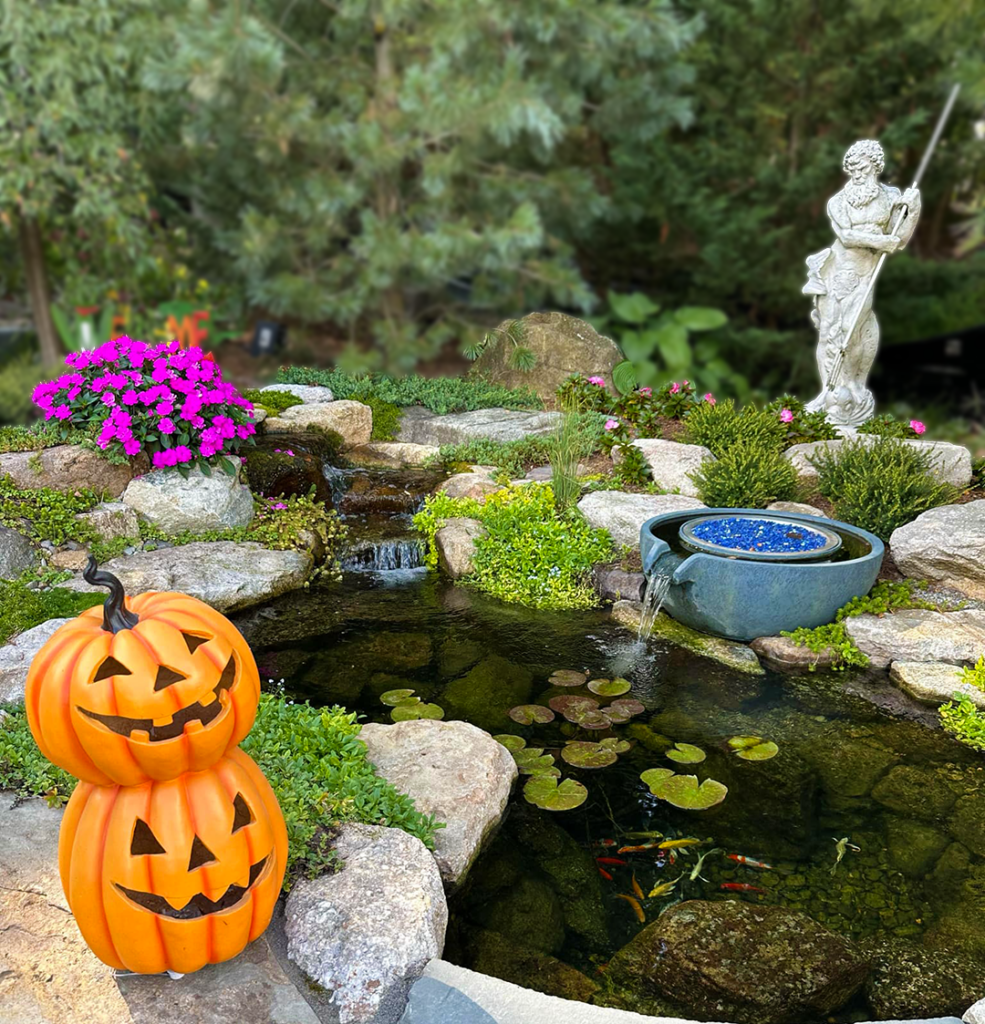
As the vibrant summer months fade, it’s time to prepare your New Jersey water feature for fall. Whether you have a pond, fountain, or waterfall, taking the right steps now can help protect your investment and ensure that it thrives through the colder months. Here’s how to get started on your fall water feature preparation.
1. Clean and Remove Debris
The first step to prepare your New Jersey water feature for fall is to thoroughly clean it. Fallen leaves, twigs, and other debris can quickly accumulate, clogging filters and pumps. Use a skimmer net to remove surface debris and consider installing a pond net to catch falling leaves before they hit the water.
Submerged plants and other underwater elements can also contribute to debris buildup. Trim back dead or dying plant material, and remove any floating or submerged debris to keep your water feature clear.
2. Manage Plants for Cooler Weather
As temperatures drop, the growth of aquatic plants will slow down, and some may even go dormant. To prepare your New Jersey water feature for fall, prune back hardy plants and remove tropical or sensitive species that won’t survive the cold.
Consider replanting with fall-friendly aquatic plants like water lilies or Japanese iris, which can add a pop of color while being resilient to cooler temperatures. If you have potted plants, move them to deeper water or bring them indoors to protect them from frost.
3. Service Your Equipment
Fall is the perfect time to check your New Jersey water feature’s equipment and perform any necessary maintenance. Start by cleaning your pumps, filters, and skimmers to ensure they’re free of debris. If you live in an area where temperatures drop below freezing, consider removing and storing pumps to prevent damage from ice.
For fountains or waterfalls, reduce the water flow as temperatures drop. This helps prevent splashing, which can lead to ice formation. If you’re unsure about winterizing your equipment, consult the manufacturer’s instructions or a professional to ensure everything is done correctly.
4. Adjust Water Levels
As you prepare your New Jersey water feature for fall, it’s essential to monitor and adjust the water levels. Falling leaves and cooler temperatures can lower water levels due to increased evaporation and organic matter decomposition. Keep the water level consistent to protect your pump and maintain the health of your aquatic life.
In ponds with fish, avoid overfilling, as this can dilute the oxygen levels in the water, which is crucial as temperatures drop. If you notice the water levels decreasing, top off with fresh water, ideally using dechlorinated water.
5. Plan for Winterization
Preparing your New Jersey water feature for fall is not just about the immediate changes—it’s also about getting ready for winter. Start planning how you’ll protect your water feature from freezing temperatures. For some, this might mean covering the feature, while others might need to install a pond heater or de-icer to keep the water moving and prevent ice from forming.
If your water feature includes fish, ensure they have adequate depth to hibernate safely. Generally, a depth of at least 18 inches is recommended to prevent the water from freezing completely.
Conclusion
Taking the time to prepare your New Jersey water feature for fall ensures that it remains a beautiful and functional part of your landscape, even as the seasons change. By following these essential tips—cleaning debris, managing plants, servicing equipment, adjusting water levels, and planning for winterization—you can enjoy your water feature year-round.
Need help with fall maintenance for your New Jersey water feature? Contact us at 973-627-0515today for expert advice and services!
For more content with tips, tricks and amazing water feature goodness, check us out on YouTube!